
5 ideas for pairing lavender
For a natural, flowering, or Mediterranean garden
Contents
Linaria or toadflax charm with their airy and delicate summer flowering between June and September. Their pastel colours come in shades of pink, white, yellow, orange, and mauve, and their spikes of small flowers add a touch of lightness and natural beauty to a garden. Linaria are perennial plants that do not live very long but self-seed spontaneously. Among the linaria, there are also annual species. Very lovely in a natural garden or rockery, they bring a pleasant romantic and wild note.
Discover our ideas for combining toadflax in your garden.
In a sunny flower bed
Linarias thrive in sunlight and offer a long summer flowering period. They lighten flower beds and can be paired for example with roses, of all sizes, as linarias can range from 10 cm to 1.20 metres in height. The Linaria purpurea ‘Canon J. Went’ is, for instance, particularly elegant with its delicate spikes of small pale pink flowers. At 80 cm tall, it adds a touch of freshness and naturalness to the garden. To maintain a light feel, you can also plant gypsophila paniculata in white or pink, as well as airy grasses, such as Pennisetum villosum.
If you love romantic atmospheres, add other delicate plants to your bed, such as, for example, foxgloves Digiplexis ‘Illumination Raspberry’, lavenders, carnations, and astrantias Astrantia major ‘Claret’. For a bed with warm colours, you can pair the Linaria purpurea purples with Eremurus bungei with spectacular yellow spikes. Finally, think about creating a stunning cascade of flowers with climbing plants, such as a clematis ‘Baby Star’, a Chinese wisteria, or a star jasmine to create a lush and floral effect.

Digiplexis ‘Illumination-Raspberry’, Astrantia major ‘Claret’, Pennisetum villosum, Linaria purpurea ‘Canon J-Went’ and Clematis ‘Baby Star’
To create a melliferous bed
The small flowers of linaria boast a lovely original shape. With their 5 petals fused together, they form two small lips, one lower and one upper, and the petals delicately end in the shape of spurs. The nectar of the flower is found within this spur. Melliferous, the flowers of linaria particularly attract bumblebees, which, thanks to their weight, manage to push apart the tightly packed petals and access the nectar.
Take advantage of this quality by creating a bed of melliferous flowers. You can pair linaria with snapdragons, also appreciated for their nectar. These plants are very similar, in their flowering and shapes, to linaria. However, they offer some variations with larger flowers than those of linaria and more vibrant colours, such as red with snapdragon ‘Black Prince’, or bicoloured tones. Among other melliferous plants, you can choose, for example, to accompany linaria, Agastache ‘Blue Boa’, which also has a spike-like shape, summer asters, Achillea ‘Coronation Gold’, mountain cornflowers, and Echinacea purpurea ‘Butterfly Kisses’.

Linaria ‘Peachy’, Achillea ‘Coronation Gold’, Echinacea ‘Butterfly Kisses’, Antirrhinum majus ‘Black Prince’ (photo Emma Forsberg) and Agastache ‘Blue Boa’
Discover other Linaria - Toadflax
View all →Available in 0 sizes
Available in 1 sizes
Available in 1 sizes
Available in 1 sizes
Available in 1 sizes
Available in 1 sizes
Available in 1 sizes
Available in 1 sizes
Available in 1 sizes
Available in 1 sizes
In a rockery
Linarias prefer well-drained, sandy soils, making them well-suited for cultivation in dry soil or in a rockery. Opt for Linaria anticaria ‘Antique Silver’, which is a spreading species that does not exceed 10 to 15 cm in height. To create a lovely rockery, you can plant them between stones or on a low wall, alongside other colourful ground-cover plants such as Delosperma ‘Table Mountain’, wall campanulas, Geranium cinereum ‘Ballerina’, and houseleeks.
If this option appeals to you, find all our tips for creating a rockery in this article!
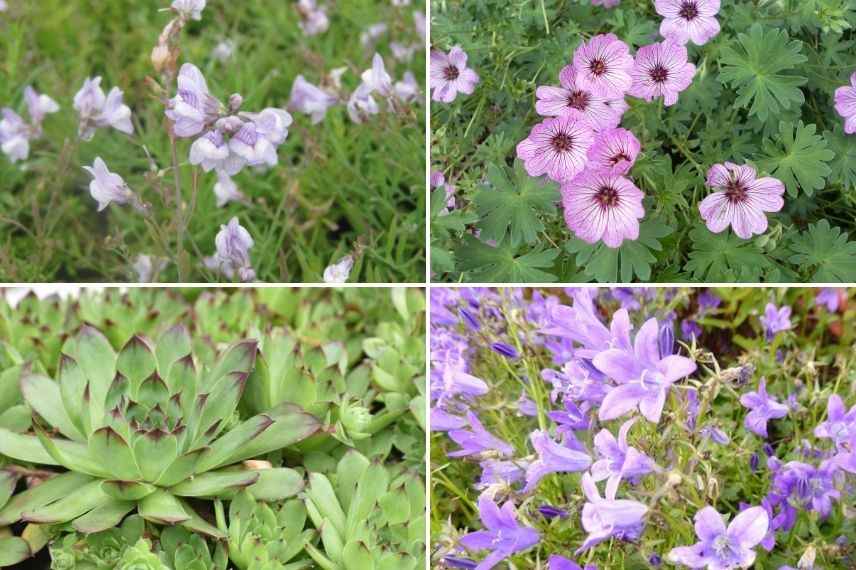
Linaria ‘Antique Silver’, Geranium cinereum ‘Ballerina’ (photo PBK), Sempervivum tectorum, and Campanula portenschlagiana ‘Resholt Variety’ (photo Guido)
Read also
Best melliferous plants by seasonIn a natural and wild garden
In France, some linarias grow naturally, such as Linaria vulgaris and Linaria repens. Linaria alpina is found in its natural habitat in the Alps, while Linaria arenaria (sand toadflax) is located in the dunes along the Atlantic Ocean. Embrace the very natural look of linarias to create a garden with a wild appearance. You can plant different species of linarias to achieve a garden full of nuances and allow them to self-seed year after year.
Install Linaria purpurea in violet, Linaria purpurea ‘Canon J. Went’ in pale pink, Linaria purpurea alba in white, and Linaria ‘Peachy’ in shades of pink, apricot, and yellow. Add Oriental poppies, corn poppies, grasses, mountain cornflowers, Gaura lindheimeri, Nigella ‘Miss Jekyll Blue’, cosmos ‘Sonata Light Pink’, and cleomes ‘Senorita Rosalita’ to create a small, flowering, and spontaneous meadow effect.

Linaria purpurea ‘Alba’, Cosmos ‘Sonata Rose’, Cleome ‘Senorita Rosalita’, and Nigella ‘Miss Jekyll Blue’ (photo Wikipedia)
In a dry or Mediterranean garden
Linarias are plants that require little maintenance and minimal watering. Therefore, you can also plant them in a dry or Mediterranean garden. They will add grace and colour when placed alongside lavenders, rosemaries, cistus, euphorbias, and silky stipa. You can also position them at the base of a oleander, an olive tree, agaves, or cypress trees. For example, try pairing small Linarias anticaria ‘Antique Silver’ with true lavender, Stipa pennata, Petit Cyprès euphorbias, an oleander ‘Provence’, and a Bohémian olive.
Additionally, discover all our tips for creating a Mediterranean garden with this article!
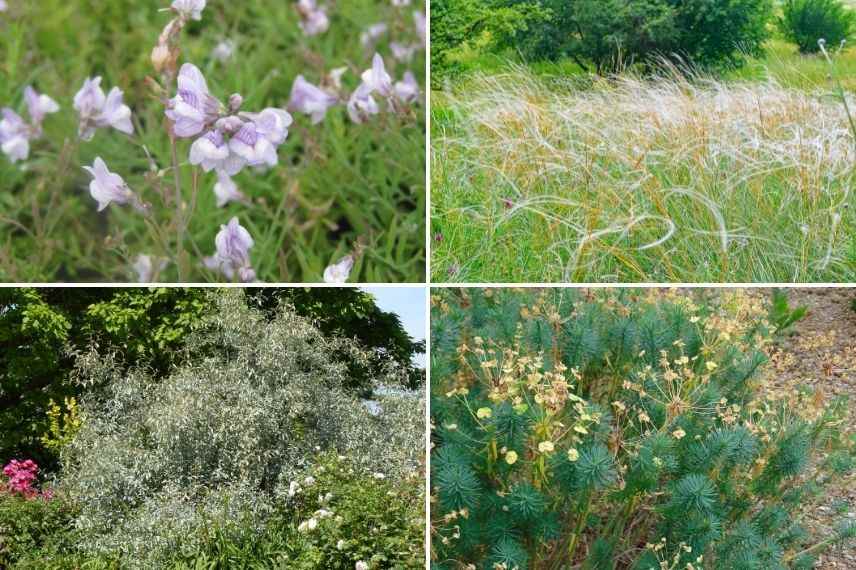
Linaria ‘Antique Silver’, Stipa pennata, Elaeagnus angustifolia, and Euphorbia cyparissias
For further reading
For everything you need to know about growing toadflax, check out our complete guide dedicated to this lovely plant, as well as our complete collection of toadflax.
To avoid any failures, we recommend planting appropriately; don’t hesitate to adopt our Plantfit web application!
- Subscribe!
- Contents
































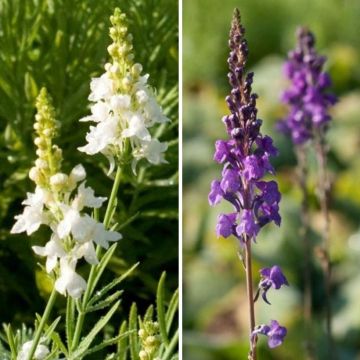


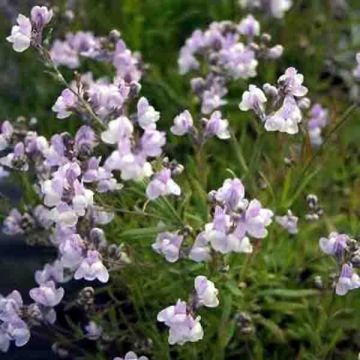


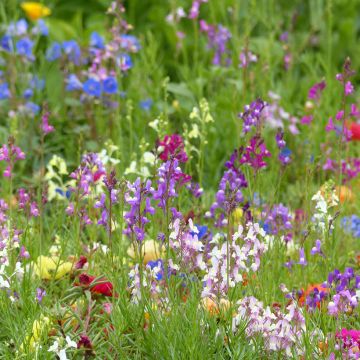

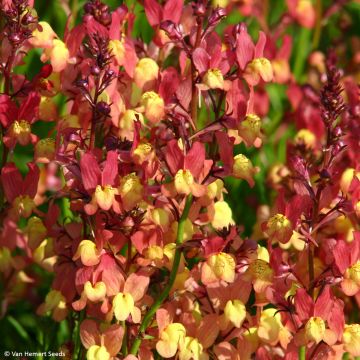

Comments